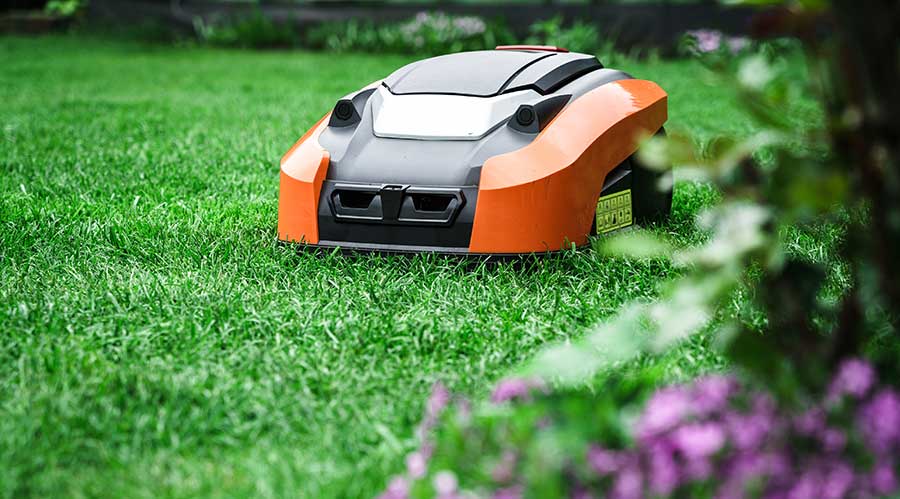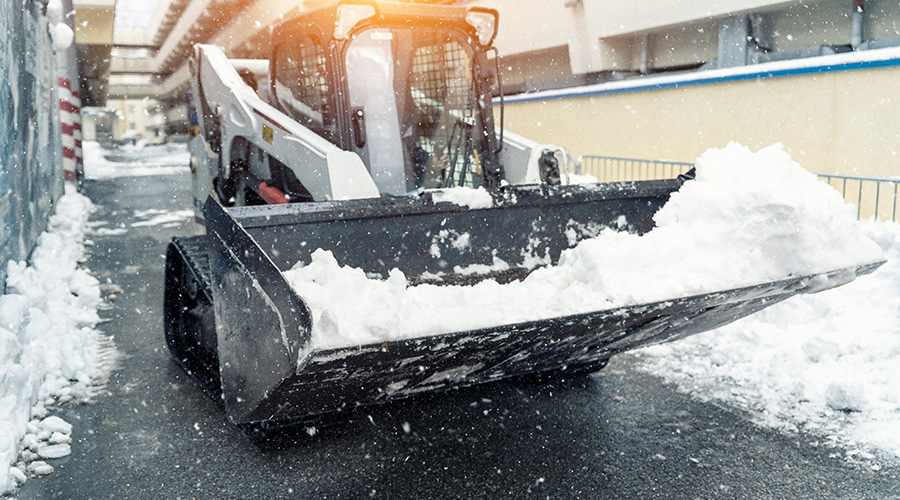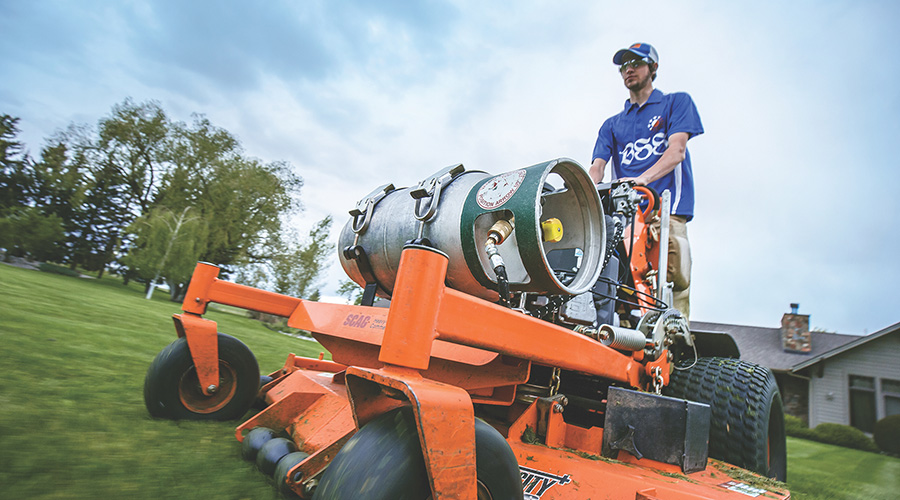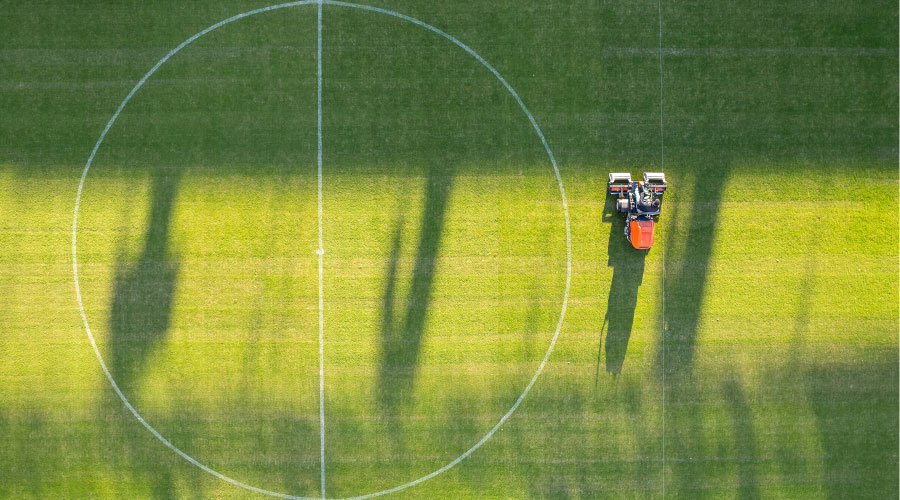Cleaning: The Outside Story
To keep facilities looking good and performing well, managers will need to match available cleaning equipment options with exterior materials
Keeping the exterior surfaces of facilities as clean as possible serves at least two important needs. First, the cleaner maintenance departments keep exterior surfaces, the easier it is to spot problems with exterior elements and address them before they become more costly. Second, regularly cleaning exterior surfaces, including sidewalks, helps enhance a facility’s appearance.
To achieve these benefits, maintenance managers developing an exterior cleaning program will need to consider cleaning equipment options — including pressure washers — and take special care to address cleaning issues related to common exterior materials.
Cleaning Equipment Role
Since cleaning is a labor- and equipment- intensive operation, cost is directly related to the time required — the labor hours — and to equipment that includes scaffolds, lifts, boom trucks and rigging for hanging scaffolding.
The best option for cleaning buildings is the gentlest method that produces a quality job economically. Cleaning methods that managers should consider include: hand scrubbing; pressure washing; dry-ice blasting; grit blasting, including soda blasting, sand blasting, and aluminum oxide blasting; acid cleaning; steam cleaning; sponge-jet cleaning; and methods that involve biodegradable degreasers and detergents.
In the vanguard of fast-solution options for large-scale cleaning of building exteriors is pressure washing. This method offers a range of benefits, not the least of which are speed, a thorough cleaning job on either plain or irregular surfaces, and compatibility with many surface materials.
Considering setup, application and cleanup time, pressure washers offer considerable flexibility and range. They clean aluminum, which frames 95 percent of curtainwall buildings, as well as masonry — including brick, block, stone, marble, granite and travertine — ferrous metal, vinyl, and wood. Besides facades, pressure washers are used on all kinds of surfaces and trim applications, such as store fronts, entries, awnings, canopies, windows, sidewalks, and loading-dock plates and overhead doors.
Pressure washers are available for hot or cold applications, are electric or gas powered, and come in a variety of portable, configurations, including custom trailers. Manufacturers offer remote trigger operation — the operator just flips a switch and pulls a trigger to begin.
Typical operating pressures range up to 1,000-3,500 psi. Many units feature concentrated cleaner injectors, a motor or engine, and quick-disconnect spray nozzles with a variety of spray patterns, wands and hoses. Proprietary biodegradable cleaners and degreasers also are available.
Step by Step
Planning a safe, thorough cleaning program for common building materials includes several steps that can do much to extend the beneficial life of the structure’s exterior materials.
The first step, assessment, is done in two phases. In the first phase, the inspector assesses the condition of surface materials and joints before cleaning. The best method is a visual check from the ground, roof, and various windows that offer a view of sample areas of all parts of the structure. The inspector should mark each area of concern on a building map. The second phase of assessment occurs after cleaning, when loose material has been washed away and mortar, caulk and seal joints and face imperfections, stains and deep soil are exposed. The inspector should add locations of these needed repairs to the building map started in the first phase.
The second step is investigation and failure analysis. The inspector should check each area marked on the building map to identify the failure cause or cleaning need. The inspector should record areas of dirt, stains from foreign chemicals — such as metal oxides, bird droppings and graffiti — loose or missing mortar, seals and caulks, and deteriorated wood trim. To determine the state of construction materials, the inspector might do materials testing, use infrared thermography to locate hidden moisture paths or heat loss, or conduct soil identification to help distinguish mold from dirt.
The third step includes repair and rehabilitation. Based on information obtained in previous steps, the planner prepares work orders for various repairs. The job is best divided into tasks on individual work orders. This facilitates the work assignment process because the supervisor can assign work by priority over a period of time, using different skills, crew sizes and times for cleaning, caulking, tuck pointing, repairing wood, and removing stain.
The final step is to caulk, fill and seal to match original or improved specifications.
Surface Types: A Closer Look
The most common building exterior materials and their cleaning treatments are as follows:
Wood. The basic enemies of wood are rain and sunlight. Dirt, mildew, rust stains or paint chalking also increase the rate of deterioration. Dirt that is not deep set responds well to cleaning with mild detergent and potable water with minimum mineral concentrations, then rinsing and drying to prevent sunspots. Cleaning crews should recoat cleaned wood with a preservative.
Mildew is removed with commercial mildewicide or a mixture of 1&Mac218;3-cup detergent, 1 quart of sodium hypochlorite and three quarts of warm water.
Chalking helps self-clean painted surfaces. It is a problem when loose particles of paint are mixed with water and migrate to adjacent surfaces, causing streaking. Cleaners can pressure wash or scrub off chalking with detergent.
Rust stains on painted surfaces are usually from steel nail heads. High-quality galvanized or stainless steel nails in the original construction are the best solution. Once the stains occur, they can’t be painted over unless the heads are set below the surface and caulked.
Masonry. Exterior polished marble is best cleaned using a pressure washer with a mild alkaline, followed by a rinse with warm water. Cleaners first should wet the surface with clean, warm water, then wash from the bottom up with overlapping sweeps. They should follow up with a thorough rinse using clean, potable water to remove all cleaner. Finally, they can dry the surface with a chamois or cotton cloth. Multi-story buildings will require high-pressure pumps. If the marble has a satin finish, cleaners might need a mild abrasive cleaner and stiff bristled brush.
For special cleaning of unidentifiable, heavy or time-set soil that does not wash off, cleaning crews can use the poultice method. A typical poultice is molding plaster mixed with hydrogen peroxide into a paste and applied with a wood spatula to a thickness of 1&Mac218;2 inch at a rate of 1 pound per square foot. First, the cleaner should moisten the surface with liquid made from the mix, apply the paste, and cover the area with a plastic sheet taped to the surface. After 48 hours, moisten the paste with cool, clean water to prevent dusting, remove it with the spatula, rinse the area, blot off excess water, and let it dry.
Cleaning crews can remove stubborn copper, bronze or brass stains from marble using a poultice of plaster, ammonia and ammonium chloride. Equal parts of ammonia and table salt also will work. Acetone, mineral spirits or unleaded gasoline remove oil and grease, while paint is removed with a paint-removal product. Tar is best removed with proprietary tar remover. Cleaners should not use flame or acids to clean marble.
Workers can clean brick and stone with low-pressure water — 100 psi — and a cleaning solution or fine sand. They should not use acid or sand blast because these processes remove some of the stone. A typical procedure goes as follows:
- Test the solution and method in a small area to make sure they are compatible with the pressure-washing equipment and building materials.
- Presoak the wall.
- Apply the cleaner through a low-pressure sprayer or high-pressure unit, for multi-story buildings.
- Let the solution set for five minutes.
- Flush the wall down, starting at the top.
Certain types of brick can change color. If the cleaning solution penetrates the mortar, this also can cause discoloration when it washes out. Smooth, hard brick or glazed brick should always be steam cleaned.
Travertine cleaning requires a three stage process: medium- to high-pressure water wash — 300-700 psi; rinse and dry; then filler application and wiping.
Cleaning crews can remove stains from fire or smoke by using a commercial fireplace cleaner or caustic soda — sodium hydroxide, which is very corrosive and should be used with care and proper personal protective equipment. Rust stains on stone respond to naval jelly or other commercial rust remover. Sometimes an abrasive cleaner and a second application of the rust remover is needed.
Other special techniques are required for historical preservation. For example, managers might need to consider mortar analysis to get the right properties and proper color match with old mortar. Also, care is essential to preserve original stone surfaces. Sand blasting is not recommended for these materials because it accelerates deterioration.
Metal curtain walls. A typical curtain wall is an aluminum frame with non-load-bearing spandrel panels and vision panels mounted to the frame. Glass cleaning is a two-step process: pressure-washing with ammonia cleaner and drying with a squeegee or soft cloth. Spandrels can be stone, coated metal or other material and are best cleaned using the cleaner and method most appropriate for the material. Workers should be careful to select a cleaner that is compatible with the adjacent surfaces, such as the aluminum frame and sealant, which is usually silicone, due to its inert properties and long life.
Any needed repairs are best performed by skilled workers with a solid understanding of spandrel fit, sealants, and the way materials weather, breathe and stand up to environmental chemicals, such as acid rain and water seepage.
Related Topics:











